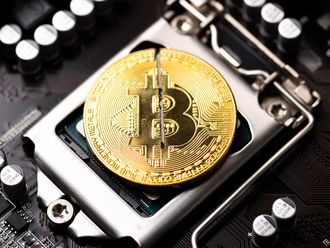Is the world ready for Bitcoin 2.0 when it is still struggling to get to grips with the 1.0 version?
With the inevitability of the tech industry’s restless hype cycle, a new set of grand claims is being made for the potential uses of the technology that lies behind the controversial cyber-currency. Bitcoin 2.0 is the term being given to the use of the infrastructure to handle a much wider range of digital transactions.
This has been a dream of the Bitcoin faithful for some time; now, the technology is showing signs of evolving to support the ambitions.
The hopes rest on the adaptability of the blockchain, the distributed, public ledger where all Bitcoin transactions are recorded. This is one of the main innovations that have fed hopes that the ideas behind the digital currency make it more than just a haven for speculators, drug dealers and crypto-anarchists.
Essentially, the blockchain provides a way to transfer value between two people online without the need for any central authority to validate the transaction. When a bitcoin is bought and sold, both parties can be certain the digital bits have been transferred and can’t be copied or replicated elsewhere.
Bringing that kind of certainty to peer-to-peer activities in a distributed digital marketplace is quite a feat. Imagine what it could do to buying and selling tokens that represent other assets, such as shares or houses. The potential uses are limited only by the imagination — and the tech entrepreneurs being drawn to Bitcoin have plenty of that.
Rather than representing just digital assets, for instance, entries in the blockchain could represent “virtual” keys that could be used to claim ownership of physical assets, such as cars, or to verify identity. From passports to wills to patents, the theoretical uses seem limitless.
Reality, however, has been slow to catch up. Bobby Goodlatte, an angel investor in Silicon Valley who has backed two Bitcoin companies, sums up the current state of the art: “It’s really early, and a lot of stuff has been over-promised.”
Adam Shapiro, of Promontory Financial Group, adds that separating the blockchain from its Bitcoin roots will not be simple. “It’s become fashionable for people to talk about being a fan of the blockchain and not of Bitcoin,” he says, but because they involve a transfer of value, all the potential uses are Bitcoin-like to some degree and so “at least a little bit financial services”.
The blockchain was not developed with other digital assets or “smart contracts” in mind and building on top of it causes other problems, says Adam Back, a British developer who came up with a key piece of the Bitcoin infrastructure. “It’s a little bit of a hack, really,” he says of attempts to adapt the technology.
One response has been the creation of alternative blockchains. One of the most ambitious projects, Ethereum, hopes to launch a network soon for contracts based on its own unit of currency, known as ether. But ideas like this involve starting afresh, making them all-or-nothing bets that don’t draw on the headway already made by Bitcoin.
The latest buzz to spread through the cyber currency world involves “sidechains”, or ledgers designed with specific purposes in mind — a market for trading equities, for instance — that are still “pegged” to Bitcoin, rather than requiring the creation of an entirely new currency. If it works, this would keep the network effects of being part of the Bitcoin world while freeing developers to come up with new models for cyber-transactions.
Blockstream, the company that Back and a handful of other prominent Bitcoin developers have set up to create this infrastructure, raised more than $20 million last month from luminaries such as Reid Hoffman of LinkedIn and Eric Schmidt of Google. That is a colossal amount for an initial seed round of financing, and a sign of the high hopes.
In the longer term, says Back, shares or other forms of property could be issued directly through a sidechain, as well as being bought and sold that way. For all the intermediaries involved in those markets — from the registrars to the brokers and escrow agents — the world would never be the same again.
The potent technology of Bitcoin has always made it a good place for dreamers, and version 2.0 raises even more disruptive possibilities than its predecessor. The implications for a wide range of online interactions are intriguing — just as long as it can survive the inevitable hype.
— Financial Times












